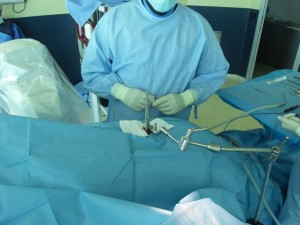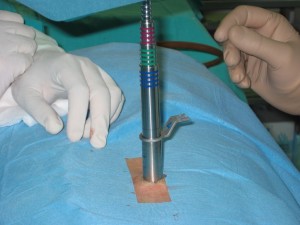We will begin by quoting one of the greatest experts and authorities in minimally invasive spine surgery, a pioneer of endoscopic and laser techniques who has trained hundreds of spinal neurosurgeons and orthopedists around the world – Dr. Martin Knight from England:
Don’t be confused by clinics offering Minimally Invasive Spine Surgery (MISS), which by definition has an incision of less than 7.5 mm, when they really mean Less Invasive Spinal Surgery (LISS), which uses an incision(s) which amount to 20-80 mm.

What is Dr. Knight trying to say? True minimally invasive spinal surgical techniques are precisely endoscopic ones (which by definition have an incision of less than 7.5 mm).
With minimally invasive endoscopic surgical techniques, surgeons are able to treat almost any spinal disease:
- herniated disc
- protruded disc
- extruded disc
- bulging disc
- pinched nerve
- back pain
- FBSS – failed back surgery syndrome
- annular tear
- sciatica.
Less invasive spine surgery (which by definition includes one or multiple incisions of 15-80 mm) is e.g. the following:
- tubular retractor assisted surgeries, known as METRx or microendoscopic procedures (acceptable solution if the surgeon is following principles of minimally invasive spine surgery)
- cervical surgical procedures (like posterior foraminotomy)
- interspinous implant surgery.
These surgeries are not necessarily bad and certainly have a significant advantage compared to traditional surgical methods (from the patient’s perspective).

Surgeries that are not minimally invasive, but can be performed according to the principles of less invasive surgery:
- minimally invasive spinal fusion
- artificial disc surgery (the entire disc is removed)
- microsurgery, micro-spinal procedures, microdiscectomy (traditional spine surgeries that use a microscope for intraoperative visualization*).
*Many hospitals claim such surgeries are minimally invasive, which does not correspond to the actual situation!
We advise you to ask around and be well informed before making a decision to have surgery, especially if you are offered a minimally invasive approach.